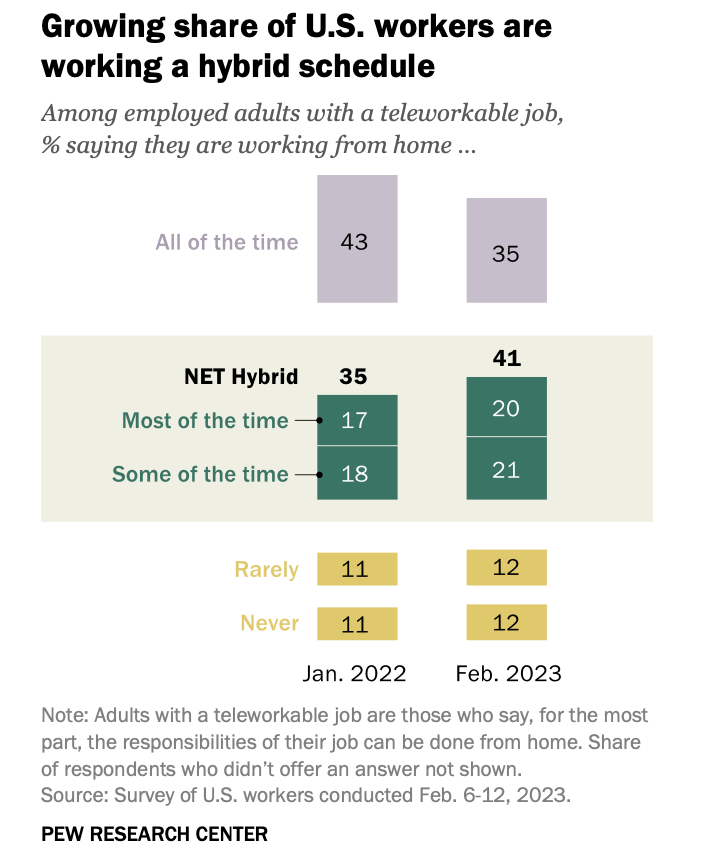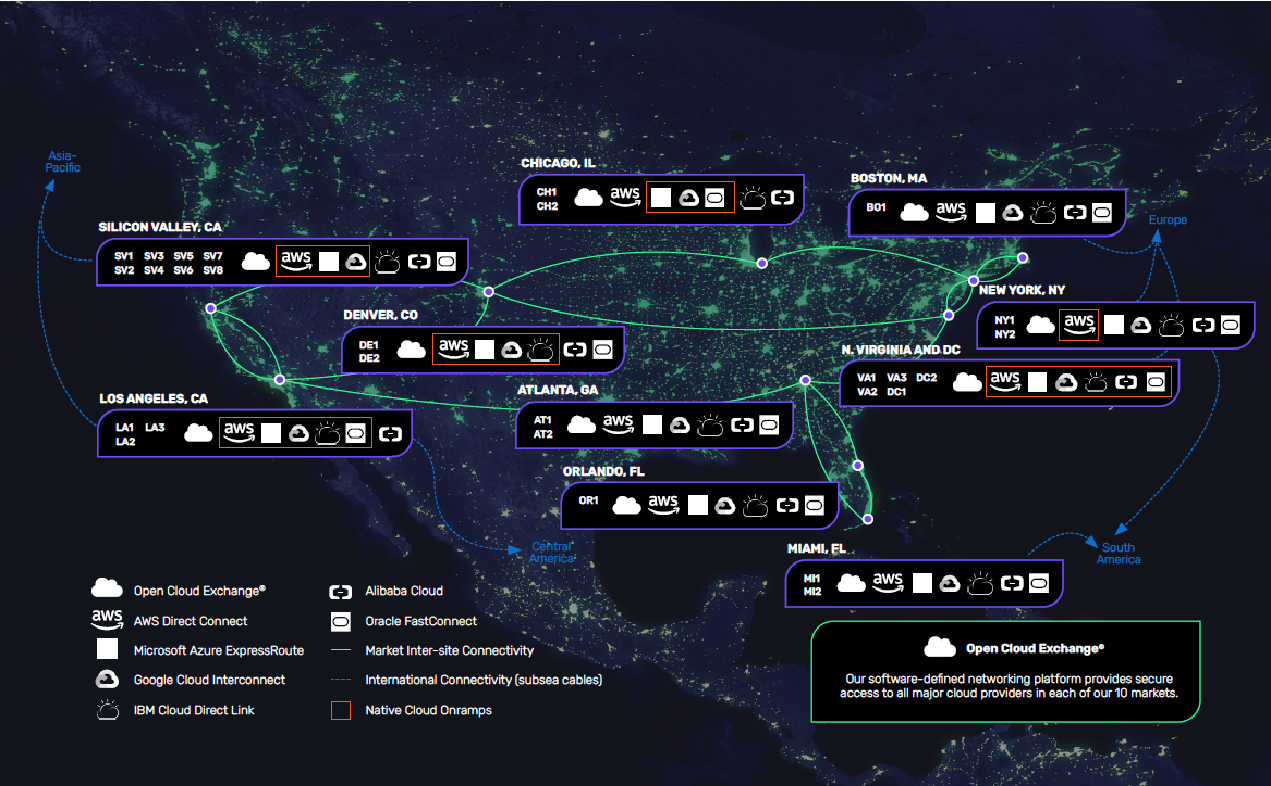
5 Reasons Why Data Center Colocation Makes Sense for a Remote and Hybrid Workforce
Remote work is an employment revolution. Prompted by the Covid-19 pandemic, the work-from-home (WFH) phenomenon has now become the “new normal” for more and more people across the United States.
Research from PEW in 2023 shows about a third (35%) of workers with jobs that can be done remotely are working from home all the time. Another 41% are working a hybrid schedule, split between home and the workplace.1

WFH is not going away any time soon – employees prefer to work at home. According to business consulting firm Robert Half, nearly 9 in 10 workers considering a job change (87%) are interested in hybrid or fully remote positions.2
“Even though we’ve seen more people return to the office as of late, companies shouldn’t pull back on remote work policies,” said Paul McDonald, Senior Executive Director of Robert Half. “Flexibility and choice are clearly non-negotiables for many professionals, and employers will lose good staff if they limit remote options without a valid reason.”2
CNBC confirms that WFH is here to stay, stating, “Remote work surged in the pandemic era – but this trend, borne of necessity for public health, has now become a fixture of the U.S. job market, one that’s likely to remain entrenched, according to labor experts.”3
Office-based employment typically means that all employees are connected to an on-premises data center. WFH disrupts this model. Today, a company can have employees working from home, distributed all over the U.S. or even the world. There’s a trade-off: Remote work makes it challenging for companies to keep employees connected to the applications and data they need to continue performing their jobs. This is where data center colocation comes in.
The following are five reasons why data center colocation is the right choice for an organization with a remote workforce.
1. You Are Already Outsourcing
If most of your employees are working remotely, you are already outsourcing your physical office space. The on-site employment model – supported by an on-premises data center – no longer applies. The logical next step is to outsource your data center operation to a colocation provider offering connectivity to your people and your customers as well.
2. High-Performance Connectivity
Connectivity is critical to your business continuity, and it is an acutely important consideration for remote work because employees can no longer plug directly into the corporate network. The WFH approach will not be successful unless you can provide access to applications, data and communications across your geographically distributed workforce.
Data center colocation offers a range of options for low-latency, high-performance connections to enable your remote team to be productive. For example, with direct onramps to leading cloud providers – bypassing the public Internet and reducing latency by 44% – CoreSite can keep all your employees connected.4
3. Geographic Proximity Improves User Experience
Remote workers depend on a reliable online work environment. Physical proximity is key. The closer an application is to the user, the lower the latency.
According to AWS, one of the benefits of colocation is that you can geographically distribute hardware to minimize latency and to be closer to your end users.5 With this advantage in mind, many companies use colocation to improve web or app experiences for customers, however this same benefit can also improve the employee user experience. Business and sales applications, data accessibility, ITOps tools and software development environments will all perform better if you utilize a colocation provider with facilities located close to your remote team members.

To meet this need, CoreSite operates 30 data centers in major population centers across the U.S. and also offers inter-market connectivity to bring your infrastructure and applications closer to your remote employees. In addition, CoreSite provides direct connections to hyperscalers like AWS and Microsoft Azure – with physical locations around the world.
4. Easy and Effective Collaboration
When everyone worked in the same office, collaboration was simple – people could stop by each other’s desks, and teams could meet in conference rooms. Although this physical immediacy is no longer possible with a remote team, technology enables effective collaboration.
In a recent article in Forbes, Brady Morgan, CEO of Virtual Assistant Staffing Agency, advises, “Equip employees with the tools they need to collaborate efficiently and securely. For example, providing access to cloud-based file-sharing platforms like Google Drive or Dropbox for document collaboration, using video conferencing tools like Zoom or Microsoft Teams for virtual meetings, and employing project management tools like Trello or Asana for task organization and delegation.”6
Colocation with direct cloud connections facilitates virtual teamwork by delivering reliable low-latency connectivity to ensure performance for collaboration tools like file sharing and video conferencing.
5. World-Class Security Protect Assets
Data center security is one of the top corporate concerns. In the past, there was a sense of security when the entire staff was working within the perimeter of the corporate firewall and the data center was in the same building. With your employees working remotely, you need to find another way to keep the company's data, applications, infrastructure and network secure. Joseph Liccardo, CoreSite Vice President of Data Center Field Operations warns that a distributed workforce can expose organizations to security issues based on how employees connect to the corporate environment.7
With colocation, you can enjoy the same level of security as a world-class on-premises data center, while maintaining a WFH employment model.
Colocation Keeps Your Remote Team Connected
Progressive companies that have adopted the WFH philosophy need to be forward-thinking about their IT infrastructure as well. Colocation can help you turn a group of individuals dispersed across the country into a high-performing team. It not only enables you to provide reliable connectivity so your remote personnel can use work applications, access data, communicate, and collaborate – it also costs much less than the on-premises alternative.
Schedule a meeting with CoreSite today to find out how you can keep your remote team connected, protected and productive while saving money on data transport.









